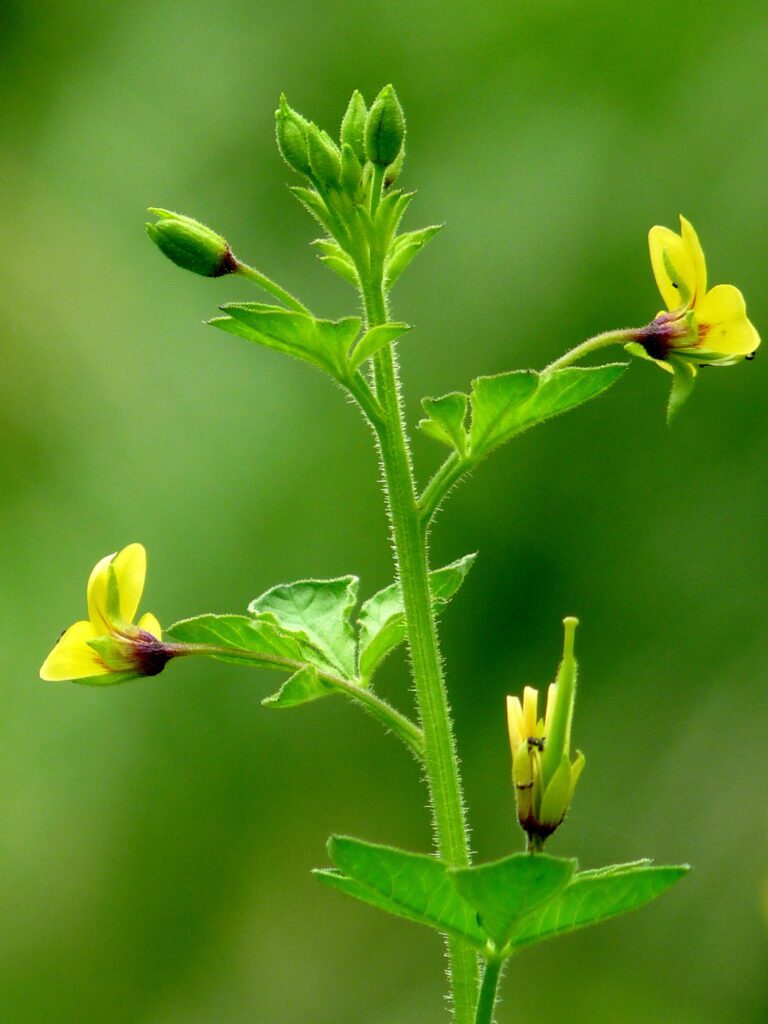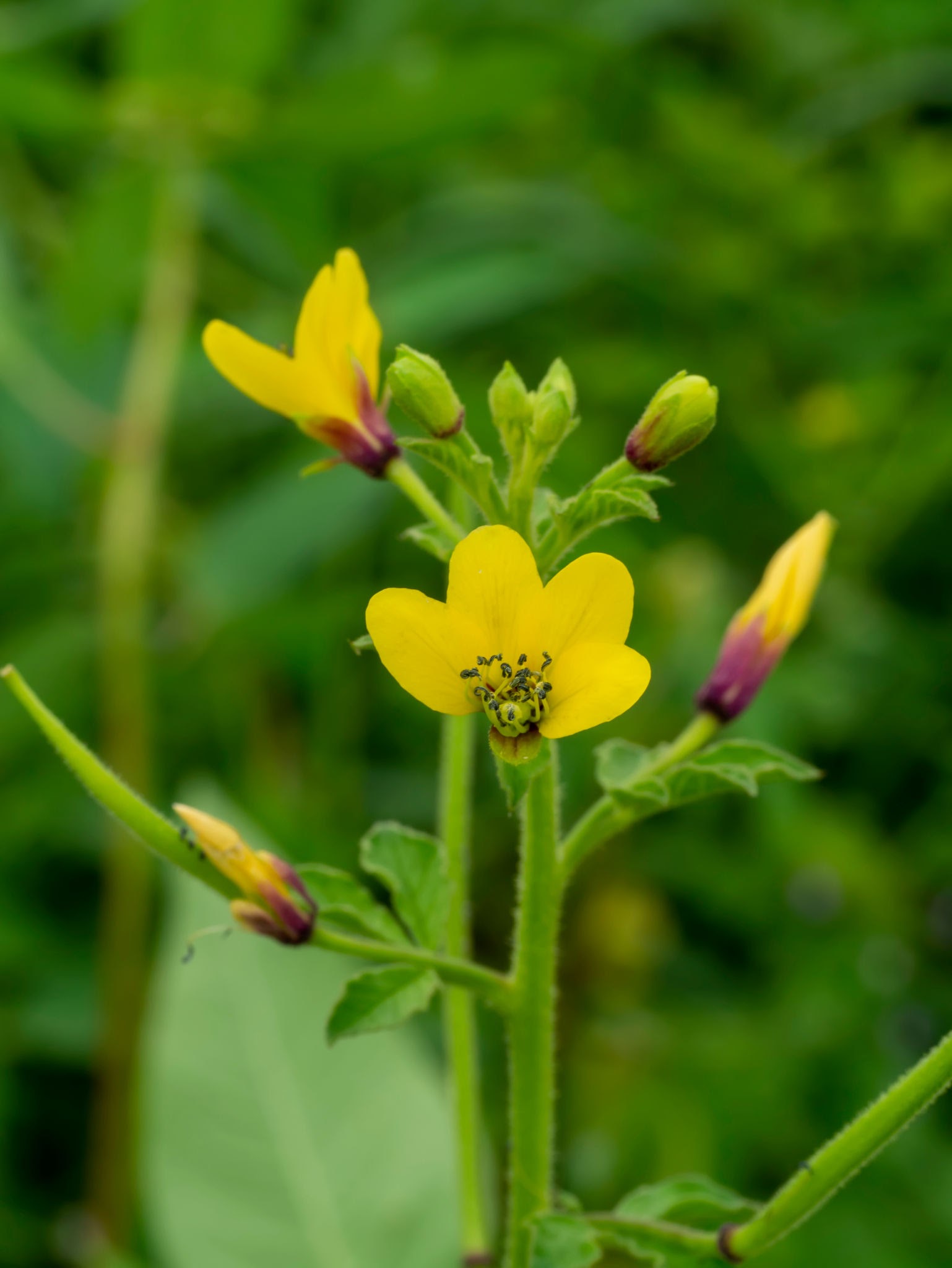Also known as spider flower, cleome viscosa is a lovely annual flowering plant native to tropical regions of Africa, Asia and North America. In India, it is commonly called arivela or wild spider flower.
With its striking spiral-shaped flowers in shades of pink, white or purple, and fern-like foliage, cleome viscosa makes an excellent addition to gardens. It can grow up to 3-4 feet tall and has a naturally bushy habit.
Cleome is easy to grow, blooms throughout summer and autumn, and attracts pollinators like bees and butterflies. When grown en masse, it creates a visually stunning display.
Growing Conditions for Cleome Viscosa

Soil
Cleome thrives in well-drained, fertile soil with a pH between 6.0-7.0. Sandy loam or loam soils are ideal. Before planting, mix in some compost or organic matter to enrich the soil.
Sunlight
This heat and drought tolerant plant requires full sun exposure to grow well. Minimum 6-8 hours of direct sunlight is recommended. Partial shade may cause the plant to become lanky and impede flowering.
Water
Water cleome regularly to keep the soil evenly moist. Provide about 1-2 inches of water per week by watering at ground level. Avoid overhead watering which can promote fungal disease. Reduce watering as flowers fade to encourage seed production.
How to Plant Cleome Viscosa

Starting from Seeds
Start cleome seeds indoors 6-8 weeks before your last expected frost date. Sow seeds in pots or trays with well-draining seed starting mix. Barely cover the tiny seeds and keep moist.
Germination takes 7-21 days at temperatures of 70-75°F. Thin seedlings to 6 inches apart. Harden off plants for 7-10 days before transplanting outdoors after dangers of frost have passed.
Transplanting Seedlings
Space cleome plants 12-18 inches apart in rows or clusters. Transplant younger seedlings carefully to avoid disturbing the taproot. Bury the stem slightly deeper than its original level to encourage root growth.
Pinch or trim the central stem to promote bushier growth with more flowers. Add a balanced fertilizer or compost around each plant to stimulate growth. Install plant supports or cages to keep plants upright as they grow tall.
Caring for Established Plants
- Keep soil consistently moist 1-2 inches deep. Use mulch to retain moisture.
- Pinch off spent flowers to prolong blooming. Deadhead plants regularly.
- Stake or cage plants for better support as they reach maturity.
- Prune overgrown plants to control height and improve air circulation.
- Fertilize plants every 3-4 weeks with a balanced 10-10-10 NPK fertilizer.
- Monitor for pests and diseases. Treat accordingly. Discard diseased plants to prevent spreading.
Common Pests and Diseases

Aphids
Aphids can gather on flowers and suck plant juices. Check undersides of leaves and buds. Blast with water or use insecticidal soap sprays.
Powdery Mildew
This fungal disease coats leaves with white powdery patches. Improve air circulation and avoid overhead watering. Use fungicides as prevention when conditions are favorable.
Prevention and Treatment
- Give plants adequate spacing for air circulation.
- Avoid wetting foliage when watering and irrigation.
- Scout regularly and remove diseased material promptly.
- Use row covers or pesticides if infestation is severe.
Harvesting and Using Cleome Viscosa
Harvesting Seeds and Flowers
- Harvest cleome seeds when the pods turn dry and brown. Break pods open to collect seeds.
- Cut flower sprays for bouquets when blooms are half open. Place immediately in water.
- Dry whole flower heads upside down in a dark, well-ventilated area.
Culinary and Medicinal Uses
- Cleome flowers and young leaves are used in salads or as garnish. They have a spicy flavor.
- Seeds can be dried and used as a pepper substitute.
- Medicinally, cleome is used to treat inflammation, fever, diabetes, and bacterial infections. Consult an Ayurvedic practitioner for proper dosages.
Tips for Successful Cleome Viscosa Growth
- Start cleome 4-6 weeks before transplanting outdoors after the last spring frost.
- Pinch and trim plants in early growth stages for bushier, branched growth.
- Use row covers or companion planting with basil to deter pests.
- Deadhead spent blooms frequently to encourage prolonged flowering.
- Stake or cage tall plants to prevent toppling over in wind and rain.
- Allow pods to dry on plants before collecting cleome seeds for next year.
FAQs
Is cleome an annual or perennial?
Cleome is considered an annual in most growing zones, but may self-seed and return as short-lived perennials in very warm climates. They are easy to grow from seeds each year.
How tall does cleome grow?
Cleome typically grows 2-4 feet tall and 1-3 feet wide. Some varieties may reach heights of 5-6 feet. Proper pruning when young can control unwanted floppiness.
What colors does cleome come in?
Popular cleome flower colors are purple, pink, white and less commonly, yellow. The ‘Colour Fountain’ mix offers bi-colors like purple and white.
Is cleome toxic or edible?
The flowers, leaves and seeds of cleome viscosa are edible and used in culinary applications. However, some people may experience skin irritation when handling the plant. Avoid consumption in large quantities.
When should I harvest cleome seeds?
Cleome seed pods will dry and turn brown on the plants when seeds are mature and ready to harvest. Collect pods once they are crisp and brittle for the highest quality seeds.
